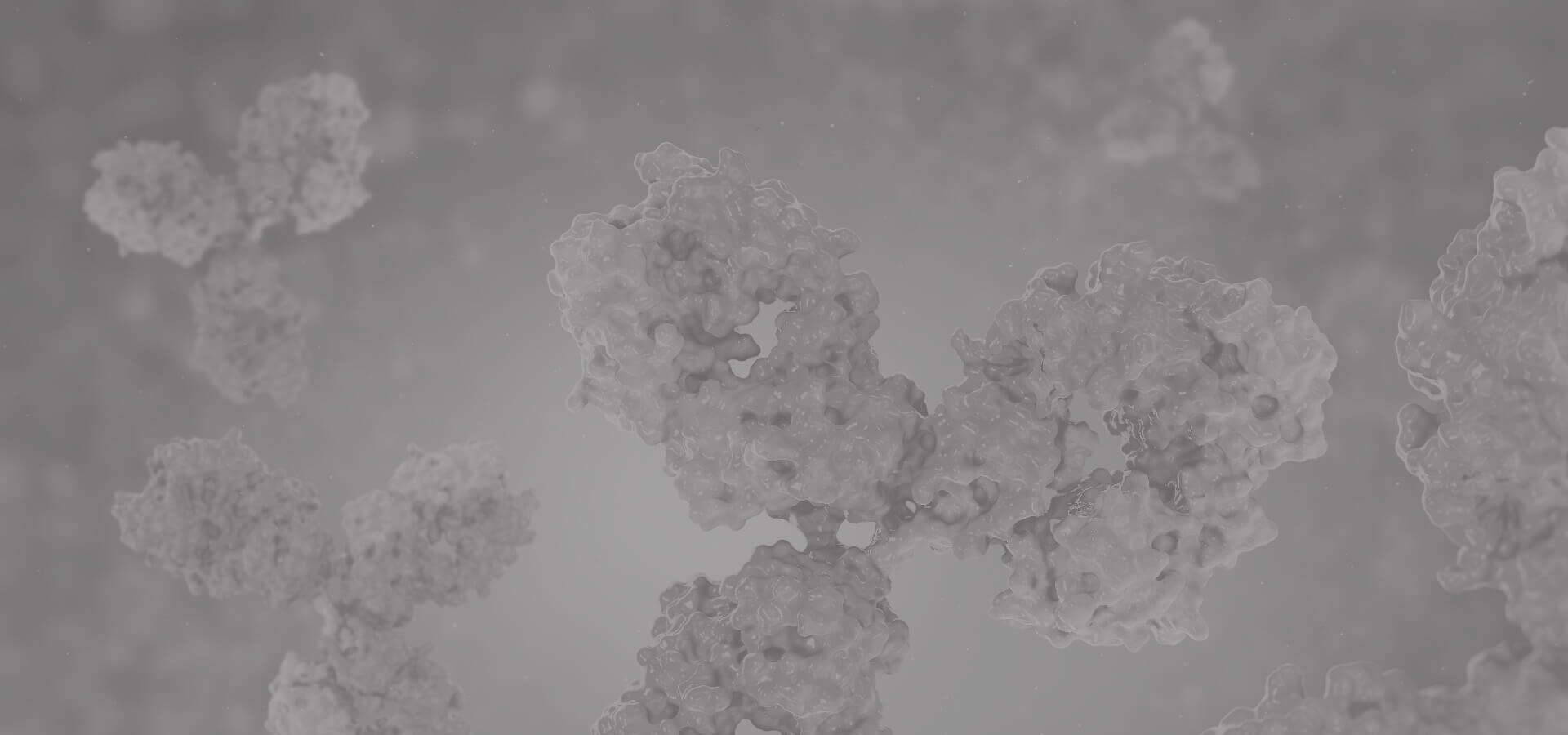GPC6
The glypicans comprise a family of glycosylphosphatidylinositol-anchored heparan sulfate proteoglycans, and they have been implicated in the control of cell growth and cell division. The glypican encoded by this gene is a putative cell surface coreceptor for growth factors, extracellular matrix proteins, proteases and anti-proteases. Mutations in this gene are associated with omodysplasia 1.
Full Name
glypican 6
Function
Cell surface proteoglycan that bears heparan sulfate. Putative cell surface coreceptor for growth factors, extracellular matrix proteins, proteases and anti-proteases (By similarity).
Enhances migration and invasion of cancer cells through WNT5A signaling.
Enhances migration and invasion of cancer cells through WNT5A signaling.
Biological Process
Cell migration Source: UniProtKB
Regulation of neurotransmitter receptor localization to postsynaptic specialization membrane Source: GO_Central
Regulation of presynapse assembly Source: GO_Central
Regulation of protein localization to membrane Source: GO_Central
Regulation of signal transduction Source: InterPro
Synaptic membrane adhesion Source: GO_Central
Regulation of neurotransmitter receptor localization to postsynaptic specialization membrane Source: GO_Central
Regulation of presynapse assembly Source: GO_Central
Regulation of protein localization to membrane Source: GO_Central
Regulation of signal transduction Source: InterPro
Synaptic membrane adhesion Source: GO_Central
Cellular Location
Cell membrane
Secreted glypican-6: Extracellular space
Secreted glypican-6: Extracellular space
Involvement in disease
Omodysplasia 1 (OMOD1):
The disease is caused by variants affecting the gene represented in this entry. Point mutations leading to protein truncation, as well as larger genomic rearrangements resulting in exon deletions, have been found in family segregating omodysplasia type 1. All mutations identified in individuals affected by omodysplasia could lead to the absence of a functional protein, the mutant RNAs being suspected to be nonsense-mediated mRNA decay (NMD) targets. Even if the mRNA escapes NMD and is translated, all mutations are expected to disrupt the three-dimensional protein structure and often to abolish multiple highly conserved cysteine residues.
A rare autosomal recessive skeletal dysplasia characterized by facial dysmorphism and severe congenital micromelia with shortening and distal tapering of the humeri and femora, to give a club-like appearance. Typical facial features include a prominent forehead, frontal bossing, short nose with a depressed broad bridge, short columella, anteverted nostrils, long philtrum, and small chin.
The disease is caused by variants affecting the gene represented in this entry. Point mutations leading to protein truncation, as well as larger genomic rearrangements resulting in exon deletions, have been found in family segregating omodysplasia type 1. All mutations identified in individuals affected by omodysplasia could lead to the absence of a functional protein, the mutant RNAs being suspected to be nonsense-mediated mRNA decay (NMD) targets. Even if the mRNA escapes NMD and is translated, all mutations are expected to disrupt the three-dimensional protein structure and often to abolish multiple highly conserved cysteine residues.
A rare autosomal recessive skeletal dysplasia characterized by facial dysmorphism and severe congenital micromelia with shortening and distal tapering of the humeri and femora, to give a club-like appearance. Typical facial features include a prominent forehead, frontal bossing, short nose with a depressed broad bridge, short columella, anteverted nostrils, long philtrum, and small chin.
View more
Anti-GPC6 antibodies
+ Filters
 Loading...
Loading...
Target: GPC6
Host: Mouse
Antibody Isotype: IgG1
Specificity: Human
Clone: CBLG1-1602
Application*: E, F
Target: GPC6
Host: Mouse
Antibody Isotype: IgG1
Specificity: Human
Clone: 7H114
Application*: E, WB
Target: GPC6
Host: Mouse
Antibody Isotype: IgG1
Specificity: Human
Clone: CBFYH-0440
Application*: F
More Infomation
Hot products 
-
Rabbit Anti-AKT3 Recombinant Antibody (V2-12567) (CBMAB-1057-CN)

-
Mouse Anti-CASP8 Recombinant Antibody (CBYY-C0987) (CBMAB-C2424-YY)

-
Mouse Anti-B2M Recombinant Antibody (CBYY-0050) (CBMAB-0050-YY)

-
Rabbit Anti-BAD (Phospho-Ser136) Recombinant Antibody (CAP219) (CBMAB-AP536LY)

-
Mouse Anti-AQP2 Recombinant Antibody (G-3) (CBMAB-A3359-YC)

-
Mouse Anti-DLC1 Recombinant Antibody (D1009) (CBMAB-D1009-YC)

-
Mouse Anti-ACLY Recombinant Antibody (V2-179314) (CBMAB-A0610-YC)

-
Rabbit Anti-ABL1 (Phosphorylated Y245) Recombinant Antibody (V2-505716) (PTM-CBMAB-0465LY)

-
Rat Anti-AChR Recombinant Antibody (V2-12500) (CBMAB-0990-CN)

-
Mouse Anti-AHCYL1 Recombinant Antibody (V2-180270) (CBMAB-A1703-YC)

-
Mouse Anti-dsDNA Recombinant Antibody (22) (CBMAB-AP1954LY)

-
Mouse Anti-CRYAB Recombinant Antibody (A4345) (CBMAB-A4345-YC)

-
Mouse Anti-ARHGAP5 Recombinant Antibody (54/P190-B) (CBMAB-P0070-YC)

-
Mouse Anti-AMH Recombinant Antibody (5/6) (CBMAB-A2527-YC)

-
Mouse Anti-AMOT Recombinant Antibody (CBYC-A564) (CBMAB-A2552-YC)

-
Rabbit Anti-ABL1 (Phosphorylated Y185) Recombinant Antibody (V2-443434) (PTM-CBMAB-0001YC)

-
Mouse Anti-ADIPOR2 Recombinant Antibody (V2-179983) (CBMAB-A1369-YC)

-
Rat Anti-FABP3 Recombinant Antibody (CBXF-2299) (CBMAB-F1612-CQ)

-
Mouse Anti-ARSA Recombinant Antibody (CBYC-A799) (CBMAB-A3679-YC)

-
Mouse Anti-BAX Recombinant Antibody (CBYY-0216) (CBMAB-0217-YY)

For Research Use Only. Not For Clinical Use.
(P): Predicted
* Abbreviations
- AActivation
- AGAgonist
- APApoptosis
- BBlocking
- BABioassay
- BIBioimaging
- CImmunohistochemistry-Frozen Sections
- CIChromatin Immunoprecipitation
- CTCytotoxicity
- CSCostimulation
- DDepletion
- DBDot Blot
- EELISA
- ECELISA(Cap)
- EDELISA(Det)
- ESELISpot
- EMElectron Microscopy
- FFlow Cytometry
- FNFunction Assay
- GSGel Supershift
- IInhibition
- IAEnzyme Immunoassay
- ICImmunocytochemistry
- IDImmunodiffusion
- IEImmunoelectrophoresis
- IFImmunofluorescence
- IGImmunochromatography
- IHImmunohistochemistry
- IMImmunomicroscopy
- IOImmunoassay
- IPImmunoprecipitation
- ISIntracellular Staining for Flow Cytometry
- LALuminex Assay
- LFLateral Flow Immunoassay
- MMicroarray
- MCMass Cytometry/CyTOF
- MDMeDIP
- MSElectrophoretic Mobility Shift Assay
- NNeutralization
- PImmunohistologyp-Paraffin Sections
- PAPeptide Array
- PEPeptide ELISA
- PLProximity Ligation Assay
- RRadioimmunoassay
- SStimulation
- SESandwich ELISA
- SHIn situ hybridization
- TCTissue Culture
- WBWestern Blot

Online Inquiry







